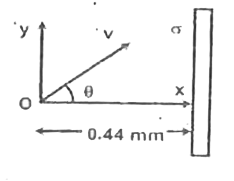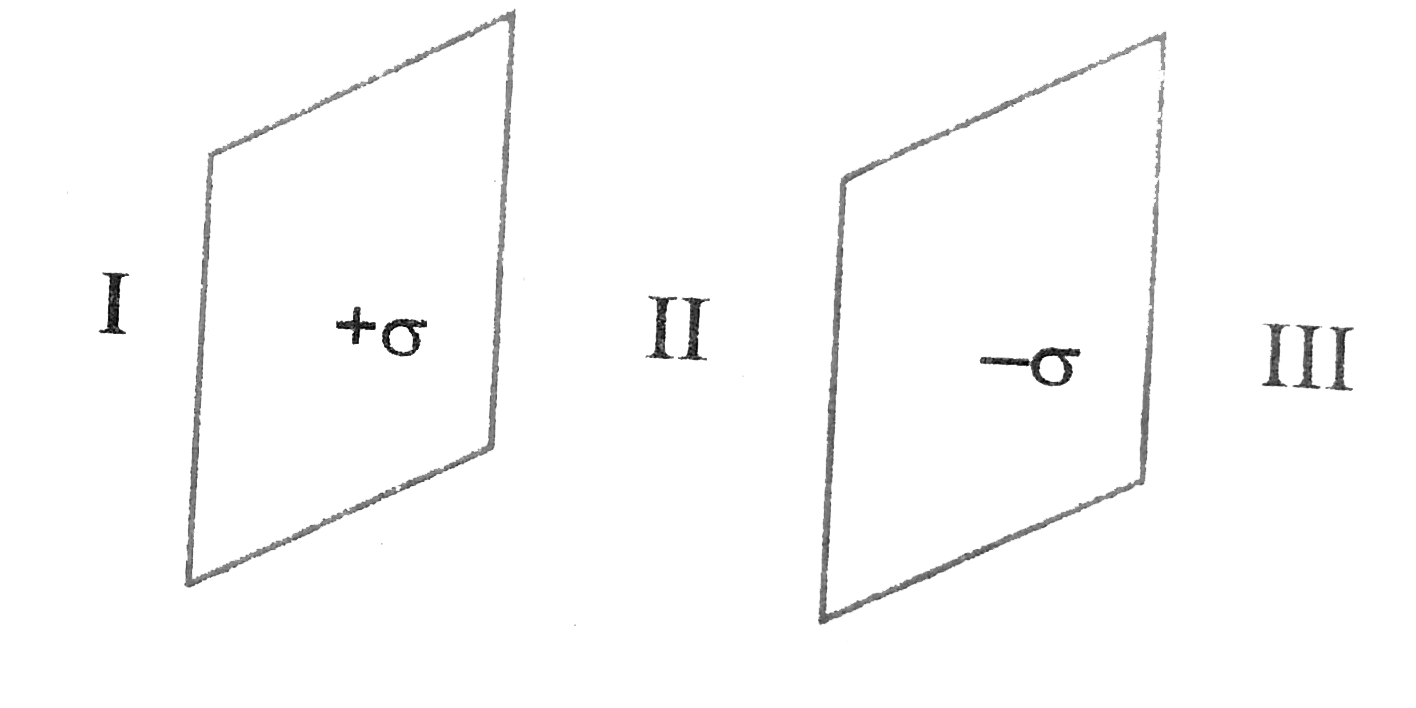An electron is fired directly towards the center of a large metal plate that has excess negative charge with surface charge density =2.0×10−6C/m2. If the initial kinetic energy of electron is 100 eV and if it is to stop due to repulsion just as it reaches the plate, how far from the plate must it be fired ?
0.44 mm
Topper's Solved these Questions
- BOOK - RESNICK AND HALLIDAYCHAPTER - GAUSS' LAW EXERCISE - PRACTICE QUESTIONS (SINGLE CORRECT CHOICE TYPE)20videos
GAUSS' LAW
- BOOK - RESNICK AND HALLIDAYCHAPTER - GAUSS' LAW EXERCISE - PRACTICE QUESTIONS (MORE THAN ONE CORRECT CHOICE TYPE)2videos
GAUSS' LAW
- BOOK - RESNICK AND HALLIDAYCHAPTER - GAUSS' LAW EXERCISE - CHECKPOINT7videos
GAUSS' LAW
- BOOK - RESNICK AND HALLIDAYCHAPTER - FORCE AND MOTION-IIEXERCISE - PRACTICE QUESTIONS (Integer Type)1videos
FORCE AND MOTION-II
- BOOK - RESNICK AND HALLIDAYCHAPTER - GEOMETRICAL OPTICS : REFLECTION EXERCISE - PRACTICE QUESTIONS (Integer Type)3videos
GEOMETRICAL OPTICS : REFLECTION
Similar Questions
An electric is fired directly towards the center of a large metal plate that has excess negative charge with surface charge density =2.0×10−6C/m2. If the initial kinetic energy of electron of electron is 100 eV and if it is to stop due to repulsion just as it reaches the plate, how far from the plate must it be fired ?
View SolutionA large conducting plane has a surface charge density 1.0×10−4cm−2.F∈dthee≤ctrostatice≠rgys→red∈acubicalvolumeofed≥1.0cm in front of the plane .
View Solution
Knowledge Check
- Question 1 - Select One
From what distance should a 100 eV electron be fired towards a large metal plate having a surface charge of −2.0×10−6Cm−2, so that it just fails to strike the plate ?
A0.50 mmB0.44 mC0.60 mmD0.77 mm - Question 2 - Select One
A metal plate of area 2m2 is charged with 12×10−6C. The surface surface density of charge is
A3μC/m2B4μC/m2C6μC/m2D8μC/m2 - Question 3 - Select One
A light of intensity 16 mW and energy of each photon 10 eV incident on a metal plate of work function 5 eV and area 10−4m2 then find the maximum kinetic energy of emitted electrons and the number of photoelectrons emitted per second if photon efficiency is 10%.
A5 eV, 1011B10 eV, 1012C5 eV, 1013D10 eV, 1014
An electron is projected with a velocity of 1.186×107m/s at an angle θ with the x-axis, towards a large metallic plate kept 0.44 mm away from the electron. The plate has a surface charge density −2×10−6C/m2. Find the minimum value of θ, for which it fails to strike the plate.
 View Solution
View SolutionA charged partical having a charge of −2.0×10−6C is placed close to a nonconducting plate having a surface charge density 4.0 xx 10^(6) C m^(-2). Fine the force of attraction between the particle and the plate.
View Solution(a) In a photoelectric experiment, the collector plate is at 2.0V with respect to the emitter plate made of copper (ϕ=4.5eV) . The emitter is illuminated by a source of monochromatic light of wavelength 200 nm. Find minimum and maximum kinetic energy of the photoelectrons reaching the collector.
(b) A small piece of cesium metal (ϕ=1.9eV) is kept a distance of 20 cm from a large metal plate having a charge density of 8.85×10−9C/m2 on the surface facing the cesium piece. A monochromatic light of wavelength 400 nm is incident on the cesium piece. Find minimum and the maximum kinetic energy of the photoelectrons reaching the large metal plate. Neglect any change in the electric field due to the presence of small piece of cesium.View SolutionTwo large this metal plates are parallel and close to each other. On their inner faces, the plates have surface charge densities of opposite signs and magnitude 17.0×10−22C/m2. What is →E : in the outer region of the first plate. (b) in the outer region of the secound plate, and (c) between the plates ? See Fig.
 View Solution
View SolutionA small piece of cesium metal is kept at a distance of 20 cm form a large metal plate having a charge density of 1.0×(10−9)C(m−2) on the surface facing the cesium piece. A monochromatic light of wavelength 400nm is incident on the cesium piece. Find the minimum and the maximum kinetic energy of the photoelectrons reaching the large metal plate. Neglect any change in electric field due to the small piece of cesium present.
View Solution

